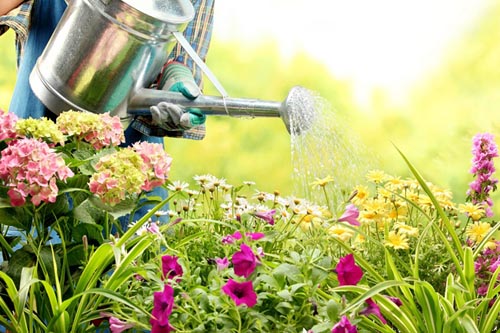Building a Raised Garden Bed Made Easy
August 26, 2015 Gardening
For many gardeners, moving onto the next level of their craft will mean planting in raised garden beds. Those who have made the switch watch their vegetable gardens benefit from richer soil, effective drainage, increased aeration, and reduced weeds. The gardeners themselves may find they suffer less back strain tending gardens one to two feet off of the ground. If you want to claim these advantages for yourself, you can easily build your own raised beds within a single morning.

Choose a location
Look for a level area for your new garden bed. The ideal location will give the plants plenty of sunlight and keep them free of debris and falling leaves from overhanging trees. Start with a space that is 3 x 6 feet or 4 x 4 feet. The bed should not be wider than four feet so that every plant is accessible without having to step inside the bed. Beds longer than six feet will need extra braces to prevent the sides from bowing out with the soil’s added weight. If building multiple beds, leave walkways between the plots so you have space to work.
Prepare the area
Once you have a location, clear the area of turf and weeds, digging down a few inches so that the bed’s walls can be set into the earth and level with each other. For better drainage and to avoid weeds, you may then add layers of gravel and landscape fabric over the area. Galvanized mesh is recommended to prevent burrowing garden invaders such as moles and gophers. The mesh can be secured to the walls of your bed with staples or nails.
Add walls
Raised garden beds can be made with a variety of materials—including concrete, bricks, or corrugated metal—but the typical bed has wooden walls. Cedar and redwood resist rotting and last longer than other options but are more expensive. Whatever wood you choose, be careful not to use any that might release toxins into the garden soil. The Old Farmer’s Almanac warns against pressure-treated wood or railroad ties treated with creosote.
To begin building, first anchor wooden posts in the ground at each corner. (If the bed extends six feet or longer, a post should be placed halfway along each side for added stability.) Next, set 2×4 planks cut to size a few inches into the ground and attach them to the posts with nails or screws. These planks can be stacked on top of each other up to two feet high. As you place the walls, make sure to keep the sides at right angles to each other. To finish off, saw the posts level with the walls and smooth the earth around all sides. Put planking around the top edge if you want a convenient place to set down tools or a glass of iced tea while you work.
Fill with soil
With the garden frame sturdy and ready for use, fill the area in with a blend of peat moss, compost, and soil mix. This is your chance to create a nutrient-rich environment for your plants to thrive. Remember that watering will settle the soil over time, so be generous and fill to the top of the walls.
Plant your new garden
Tomatoes, squash, string beans—the options are only limited by the space of the bed. Map out your plans for the garden space and start planting.
This article was written by Fergie McLachlan, organic gardener who grows her own organic veggies and has a fully organic flower garden. She recommends perusing the selection at Bayou City Lumber to find the right materials for your garden at the lowest cost.
Share it with Your Friend
